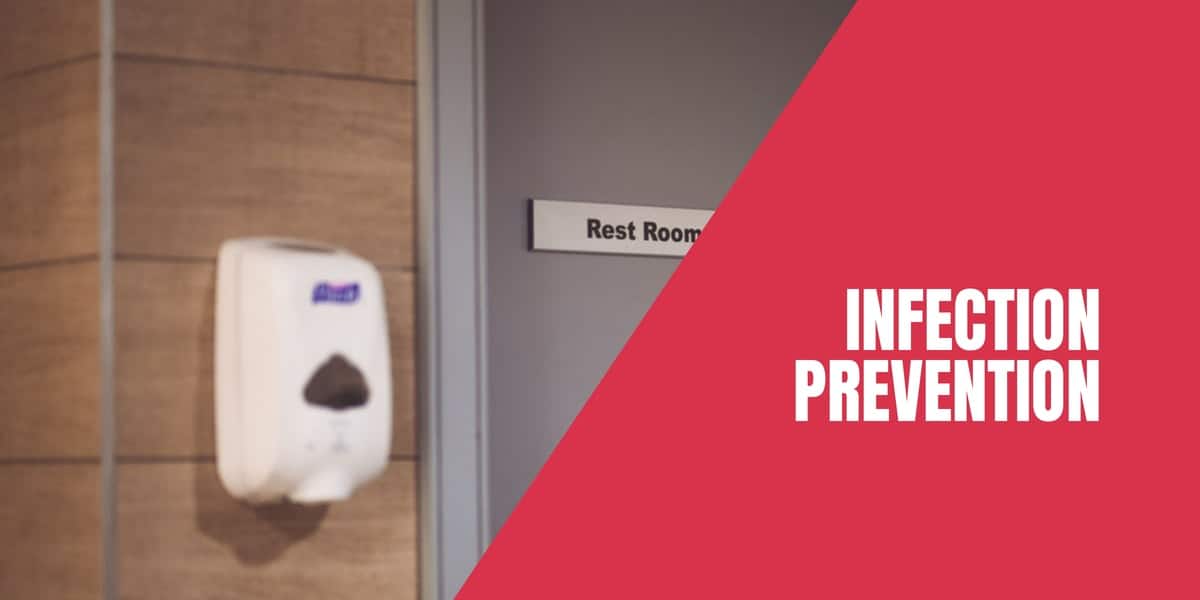High-quality infection prevention practices in facilities which handle the care of vulnerable demographics are vital to halting the increasing spread of deadly superbugs.

Infection Prevention in High-Risk Facilities
Children, the sick, and elderly are at a higher risk for infection than typical demographics with healthy immune systems.
Facilities that provide services and care for these demographics must maintain exceptionally high standards of cleanliness and hygiene to ensure the safety of their occupants.
Unfortunately, many of these same facilities are the ones most at risk of harboring and spreading dangerous germs due, in part, to the misuse and over-prescription of antibiotics.
According to the U.S. National Institutes of Health (NIH)
Unfortunately, many antibiotics prescribed to people and to animals are unnecessary.
And the overuse and misuse of antibiotics helps to create drug-resistant bacteria.
Superbugs are strains of bacteria that are resistant to several types of antibiotics.
Each year these drug-resistant bacteria infect more than 2 million people nationwide and kill at least 23,000, according to the U.S. Centers for Disease Control and Prevention (CDC).
Drug-resistant forms of tuberculosis, gonorrhea, and staph infections are just a few of the dangers we now face.
Meanwhile, the science behind whether or not antibacterial soap and cleaning products have or have not contributed to the rise of these types of diseases is still out.
Given the absence of clarity in that regard, the safest route is to implement a rigid infection prevention and control procedure that adheres to proven science and medical fact.
The Issues With Conventional Infection Prevention and Control Procedures
Let's get right down to the brass tax of the matter.
The overuse of antibacterial soap was so concerning that the U.S. Food and Drug Administration (FDA) banned the manufacture, use, and marketing of products containing twenty-four separate active ingredients, including triclosan.
According to the American Academy of Family Physicians;
The FDA finalized a rule that it first proposed in 2015, finding that triclosan and 23 other active ingredients aren't generally recognized as safe and effective for use in OTC health care antiseptic products.
These include health care personnel hand washes and rubs, surgical hand scrubs and rubs, and patient antiseptic skin preparations.
This means that products containing these active ingredients that are intended for use in OTC health care antiseptics by health care professionals -- in a hospital setting or other health care situations -- may no longer be marketed without undergoing premarket review.
Further, a commonly employed disinfectant in healthcare environments--quats--have been linked to numerous severe health issues, including:
- Respiratory problems, including asthma in individuals who previously displayed no signs of the ailment.
- Allergic reactions.
- Skin irritation.
- The disruption of hormone activity.
- The release of formaldehyde.
- Reproductive issues, and;
- Aquatic life toxicity.
Source:
High-Performance Infection Prevention and Control
Implementing the highest standards of cleanliness and hygiene in facilities providing the care of vulnerable patients, children, and the elderly should be a top priority for facility managers and maintenance staff, consisting of:
- Hand Hygiene - Regular handwashing is critical to the health and safety of all occupants, and vital in the prevention of the spread of germs. Presently, the best available product on the market is liquid-foaming hand soap from packet-filled dispensers.
- Microfiber - Microfiber combined with water is, technically, an antimicrobial agent, as the pockets formed during the manufacturing process will capture microbial matter, which is removed during the rinse and launder cycle, or killed with green disinfectants.
- No-Touch Disinfection - Several options are currently on the market, ranging from UV lighting to portable electrostatic disinfection appliances, which have proven very effective in classroom environments.
A combination of hand hygiene enforcement, microfiber-based cleaning that focuses on the elimination of cross-contamination, and overlapping no-touch disinfection techniques will safely and effectively eliminate germs, bacteria, and superbugs without the dangers of ongoing antibacterial use.
Additionally, these practices will prevent the direct or accidental exposure of vulnerable occupants to deadly chemical agents found in traditional commercial cleaning and disinfection products.
References & Resources
Takeaway
Implementing stringent infection prevention and control measures in your facility is vital to the health and wellbeing of all occupants.
Focusing on a clean-for-health-first approach will ensure that, in the efforts to provide and sustain a hygienic environment, we do not inadvertently contribute to additional health issues, or advance the rapid evolution of antibiotic-resistant bacteria and superbugs.
Outsourcing your organization's infection prevention and control requirements has proven to be a cost-effective and superior alternative to managing and maintaining a facilities' maintenance and custodial team, in-house.
Contact us today and discover why Vanguard Cleaning Systems® is the Standard of Clean® for businesses throughout Northwest Arkansas, Missouri, and Oklahoma.
In Oklahoma, dial 918-960-4450
In Arkansas, dial 479-717-2410
In Missouri, dial 417-812-9777
